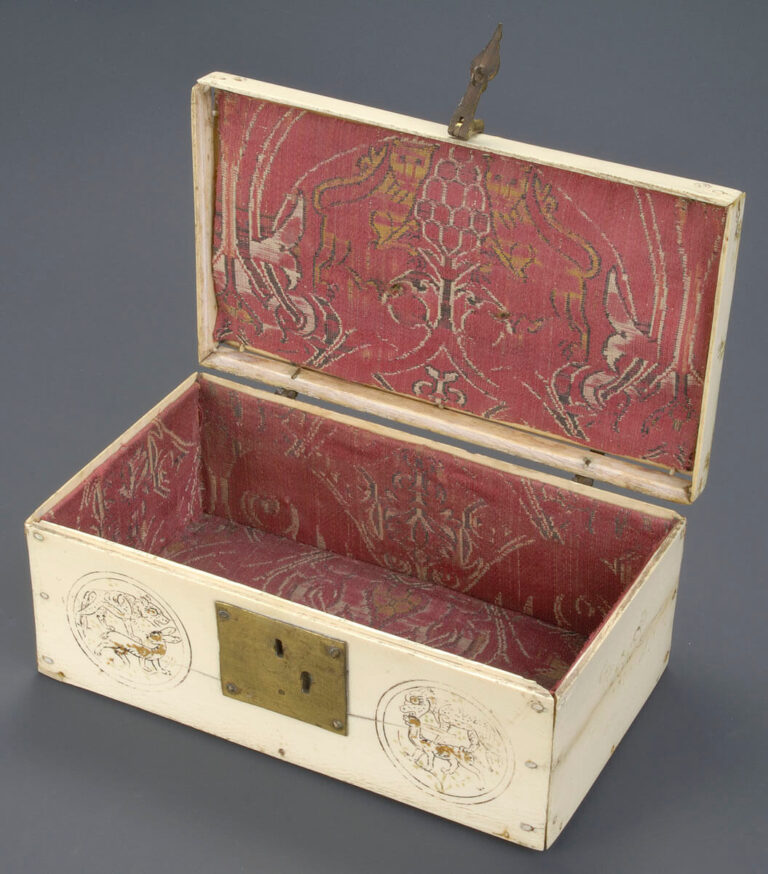Inv. no. LNS 5 I
Slabs of elephant tusk held together with ivory pins, ink, paint and gold leaf decoration, fitted with gilded bronze mounts
Height 7.5 cm; width 18 cm
Sicily, 12th – early 13th century AD
6th – early 7th century AH
Ivory & Wood
Objects of ivory and wood comprise decorative architectural items such as beams and doors, and smaller items such as boxes, jewellery and gaming pieces. Relatively few examples have survived due to the perishability of the materials.
That said, an ivory standing female figure circa 2450 – 2350 BCE from Syria or Mesopotamia is witness to the skills of pre-Islamic artisans. The figure originally included inlays for eyes, eyebrows and the pubic area in addition to holes that indicate the addition of a hair piece.
Ivory was used throughout Islamic times, much of it initially following the Byzantine tradition. Highly prized in Europe in the mediaeval period, many items produced in Islamic lands were donated to churches where they are still preserved in treasuries of cathedrals. Fine objects continued to be produced by Muslim and other craftsmen for Christian patrons in the aftermath of Arab rule in Italy and Spain. Ivory was often used for sword and dagger hilts and small items of adornment such as belt buckles, which are particularly well represented from the Ottoman Empire and India.
The inventiveness of artists continued in the Islamic period. It can be seen in the ‘bevelled’ style of the 9th century through the mediaeval period’s complex geometric patterns which were used for compositions in door panels and furniture, especially well known from pulpits (minbars) and Qur’an stands (kursis) of mosques. A completely different style of carving developed in the Islamic West where a style of florid vegetal decoration developed, often highlighted with polychrome painting.

LNS 5 I
Ivory casket with gilded bronze fittings, decorated with medallions enclosing...

LNS 7 I
Lidded ivory box with guilloche borders, a band of infinite-repetition...

LNS 7 I
Lidded ivory box with guilloche borders, a band of infinite-repetition geometric pattern (square plan of repetition) and an inscription in naskhi script, invoking ‘Glory to our lord the Sultan’ and ‘And there is none victorious other than God’
Inv. no. LNS 7 I
Lathe-turned and carved from elephant tusk, with gilded silver fittings
Height 8.3 cm; diameter 8.5 cm
Spain, 14th century AD
8th century AH
You can share this object via:

LNS 19 I
Ivory box, carved in relief with representations of unicorns, birds...

LNS 19 I
Ivory box, carved in relief with representations of unicorns, birds and plant forms. The edge of the lid carved with human faces and quadrupeds, its top with an ‘inscription’ in degenerate naskhi script ‘copied’ from the style used in the Alhambra and other Nasrid monuments
Inv. no. LNS 19 I
Lathe-turned and carved from elephant tusk, painted, and fitted with gilded bronze mounts
Height 10 cm; diameter 7.5 cm
Spain, the lower part early 11th century AD; lid and mounts later (but not modern) replacements
early 5th century AH
You can share this object via:

LNS 21 I
Covered ivory bottle with ribbed bulbous body and slightly concave...

LNS 21 I
Covered ivory bottle with ribbed bulbous body and slightly concave neck, the latter inscribed in Kufic script (in ‘vertically mirrored’ fashion) ‘O Fulfiller of needs, O Supporter of goals’ (an invocation to God)
Inv. no. LNS 21 I
Lathe-turned and carved from elephant tusk, with traces of colour
Height 8.3 cm; diameter 4.8 cm
India, ca. later 15th – 16th century AD
ca. later 9th – 10th century AH
You can share this object via:

LNS 22 I
Ivory mortar with guilloche borders, the body with four twelve-petalled...

LNS 22 I
Ivory mortar with guilloche borders, the body with four twelve-petalled compasswork roundels against a ground of frilly half-palmette designs
Inv. no. LNS 22 I
Turned from elephant tusk, carved
Height 13.5 cm; diameter 11.2 cm
Spain, 14th – 15th century AD
8th – 9th century AH
You can share this object via:

LNS 102 W j
Group of ten luxurious spoons made, variously, of coral, mother-of-pearl,...
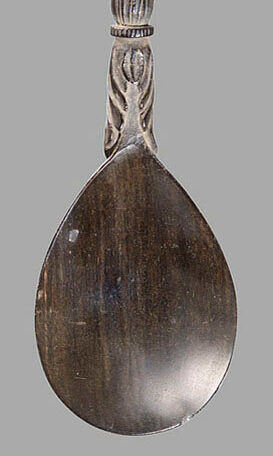
LNS 102 W j
Group of ten luxurious spoons made, variously, of coral, mother-of-pearl, ivory, tortoise shell, horn, coconut shell and wood, and with silver and copper elements
Inv. no. LNS 102 W a-j
Variously carved, steam-moulded, mortised and tenoned, and inlaid
Mean length 24 cm; mean witdth 7 cm
Turkey, late 18th century AD
late 12th century AH
You can share this object via:

LNS 102 W i
Group of ten luxurious spoons made, variously, of coral, mother-of-pearl,...

LNS 102 W i
Group of ten luxurious spoons made, variously, of coral, mother-of-pearl, ivory, tortoise shell, horn, coconut shell and wood, and with silver and copper elements
Inv. no. LNS 102 W a-j
Variously carved, steam-moulded, mortised and tenoned, and inlaid
Mean length 24 cm; mean witdth 7 cm
Turkey, late 18th century AD
late 12th century AH
You can share this object via:

LNS 102 W h
Group of ten luxurious spoons made, variously, of coral, mother-of-pearl,...

LNS 102 W h
Group of ten luxurious spoons made, variously, of coral, mother-of-pearl, ivory, tortoise shell, horn, coconut shell and wood, and with silver and copper elements
Inv. no. LNS 102 W a-j
Variously carved, steam-moulded, mortised and tenoned, and inlaid
Mean length 24 cm; mean witdth 7 cm
Turkey, late 18th century AD
late 12th century AH
You can share this object via:

LNS 102 W g
Group of ten luxurious spoons made, variously, of coral, mother-of-pearl,...

LNS 102 W g
Group of ten luxurious spoons made, variously, of coral, mother-of-pearl, ivory, tortoise shell, horn, coconut shell and wood, and with silver and copper elements
Inv. no. LNS 102 W a-j
Variously carved, steam-moulded, mortised and tenoned, and inlaid
Mean length 24 cm; mean witdth 7 cm
Turkey, late 18th century AD
late 12th century AH
You can share this object via:

LNS 102 W f
Group of ten luxurious spoons made, variously, of coral, mother-of-pearl,...

LNS 102 W f
Group of ten luxurious spoons made, variously, of coral, mother-of-pearl, ivory, tortoise shell, horn, coconut shell and wood, and with silver and copper elements
Inv. no. LNS 102 W a-j
Variously carved, steam-moulded, mortised and tenoned, and inlaid
Mean length 24 cm; mean witdth 7 cm
Turkey, late 18th century AD
late 12th century AH
You can share this object via:
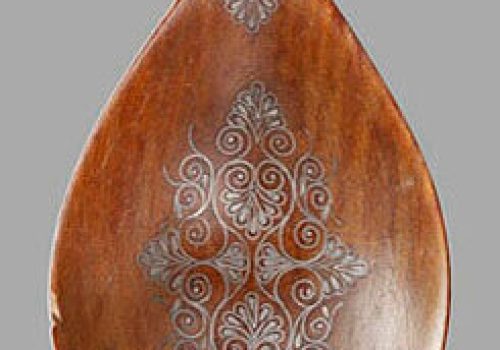
LNS 102 W e
Group of ten luxurious spoons made, variously, of coral, mother-of-pearl,...

LNS 102 W e
Group of ten luxurious spoons made, variously, of coral, mother-of-pearl, ivory, tortoise shell, horn, coconut shell and wood, and with silver and copper elements
Inv. no. LNS 102 W a-j
Variously carved, steam-moulded, mortised and tenoned, and inlaid
Mean length 24 cm; mean witdth 7 cm
Turkey, late 18th century AD
late 12th century AH
You can share this object via:
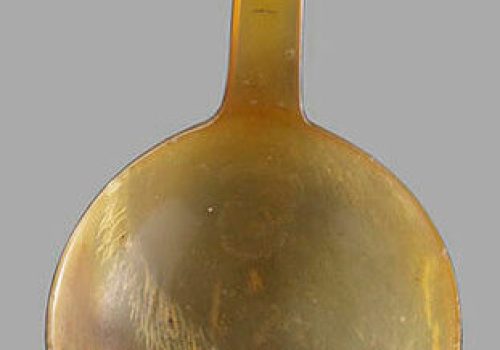
LNS 102 W d
Group of ten luxurious spoons made, variously, of coral, mother-of-pearl,...
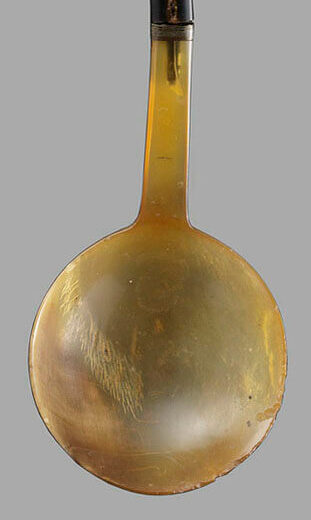
LNS 102 W d
Group of ten luxurious spoons made, variously, of coral, mother-of-pearl, ivory, tortoise shell, horn, coconut shell and wood, and with silver and copper elements
Inv. no. LNS 102 W a-j
Variously carved, steam-moulded, mortised and tenoned, and inlaid
Mean length 24 cm; mean witdth 7 cm
Turkey, late 18th century AD
late 12th century AH
You can share this object via:
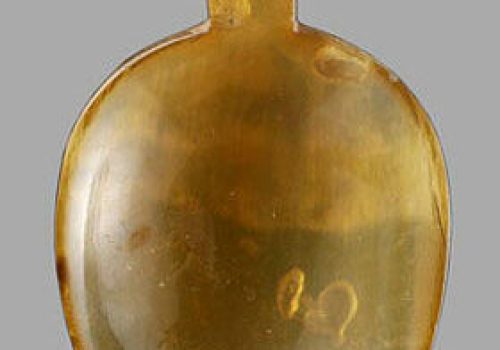
LNS 102 W c
Group of ten luxurious spoons made, variously, of coral, mother-of-pearl,...

LNS 102 W c
Group of ten luxurious spoons made, variously, of coral, mother-of-pearl, ivory, tortoise shell, horn, coconut shell and wood, and with silver and copper elements
Inv. no. LNS 102 W a-j
Variously carved, steam-moulded, mortised and tenoned, and inlaid
Mean length 24 cm; mean witdth 7 cm
Turkey, late 18th century AD
late 12th century AH
You can share this object via:
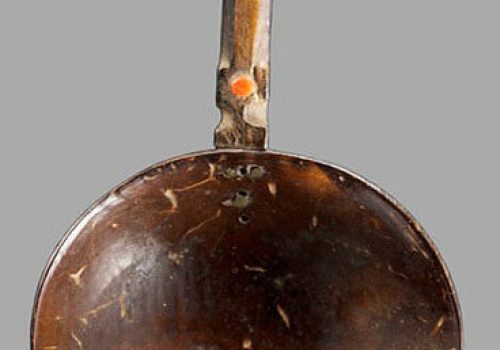
LNS 102 W b
Group of ten luxurious spoons made, variously, of coral, mother-of-pearl,...

LNS 102 W b
Group of ten luxurious spoons made, variously, of coral, mother-of-pearl, ivory, tortoise shell, horn, coconut shell and wood, and with silver and copper elements
Inv. no. LNS 102 W a-j
Variously carved, steam-moulded, mortised and tenoned, and inlaid
Mean length 24 cm; mean witdth 7 cm
Turkey, late 18th century AD
late 12th century AH
You can share this object via:

LNS 102 W a
Group of ten luxurious spoons made, variously, of coral, mother-of-pearl,...

LNS 102 W a
Group of ten luxurious spoons made, variously, of coral, mother-of-pearl, ivory, tortoise shell, horn, coconut shell and wood, and with silver and copper elements
Inv. no. LNS 102 W a-j
Variously carved, steam-moulded, mortised and tenoned, and inlaid
Mean length 24 cm; mean witdth 7 cm
Turkey, late 18th century AD
late 12th century AH
You can share this object via:

LNS 62 W
Wooden frieze, probably from a palace, with a series of...

LNS 62 W
Wooden frieze, probably from a palace, with a series of elaborately cusped arches containing mirrored repetitions of the word ‘happiness’ (al-Yumn) in Kufic script
Inv. no. LNS 62 W
Carved and painted
Height 53.5 cm; width 342 cm
Spain or the Maghrib, 13th – 14th century AD
7th – 8th century AH
You can share this object via:

LNS 46 W
Wooden niche-head with carved foliate designs and muqarnas squinches lining...
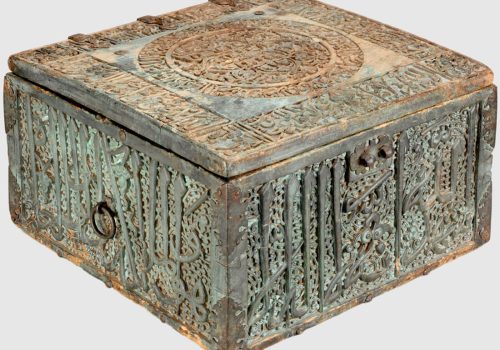
LNS 35 W
Featuring thuluth and naskhi inscriptions providing an extraordinary wealth of...
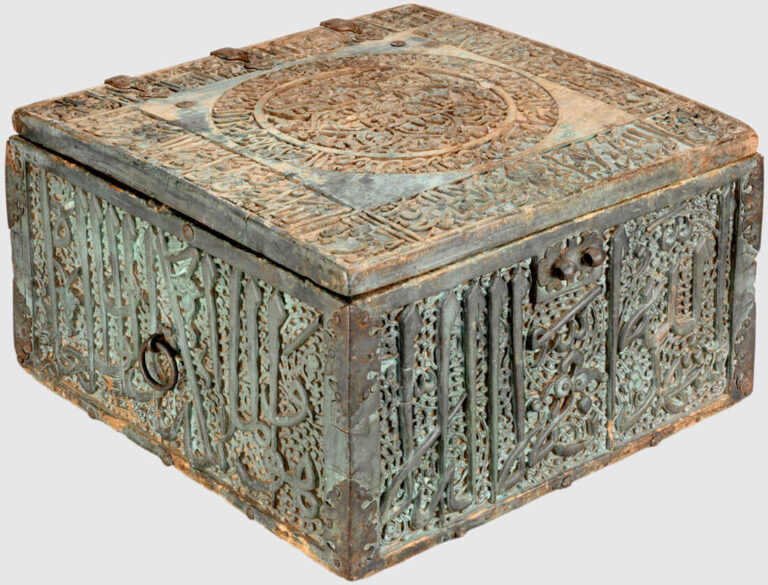
LNS 35 W
Featuring thuluth and naskhi inscriptions providing an extraordinary wealth of information, in addition to two passages from the Qur’an: the name and titles of the man (‘Izz ad-Din Malik son of Nasir-Allah Muhammad) who endowed it for the tomb of the deceased, Fakhr ad-Din Chupan, and the date of his death; the signature of the artist, al-Hasan, son of Qutlu Beg, and his patronymics, showing that he was the grandson of the deceased
Inv. no. LNS 35 W
Mitred, mortised, tenoned, carved and painted (very possibly in imitation of jade)
Height 26 cm; width 43.5 cm
East Iranian world, probably Transoxiana, soon after mid-Rajab 745 AH/later November 1344 AD
You can share this object via:

LNS 194 W
Wooden box with hinged drop-down front for access to the...
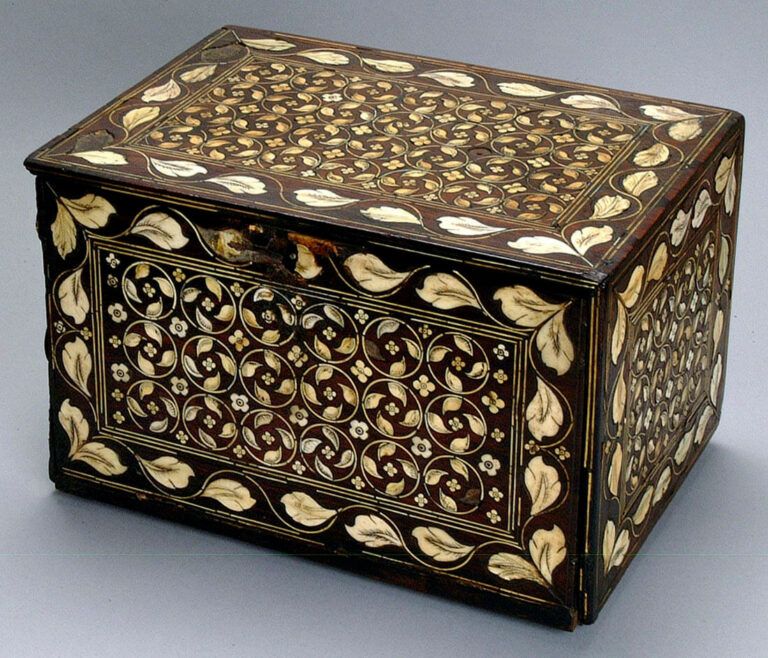
LNS 194 W
Wooden box with hinged drop-down front for access to the internal drawers, inlaid in floral motifs of ivory and bone (with internal engraved and stained details) against the dark wood field
Inv. no. LNS 194 W
Mitred, mortised and tenoned, and inlaid
Height 20 cm; length 30.8 cm
India, ca. late 17th – 18th century AD
ca. late 11th – 12th century AH
You can share this object via:

LNS 240 W a,b
Pair of wooden shutters or cupboard door leaves inlaid with...

LNS 240 W a,b
Pair of wooden shutters or cupboard door leaves inlaid with bone, featuring an infinite-repetition geometric star pattern (pentagonal lozenge plan of repetition, ten-pointed stars and other polygons)
Inv. no. LNS 240 W a,b
Mitred, mortised, tenoned, rabbeted and inlaid
Height 114.7 cm; width 107 cm
Egypt, ca. later 14th – 15th century AD
ca. later 8th – 9th century AH
You can share this object via:

LNS 191 W
Wooden marquetry kit-box for a calligrapher inlaid with wood, ivory...

LNS 191 W
Wooden marquetry kit-box for a calligrapher inlaid with wood, ivory and dyed bone and inlaid with gold-painted ivory panels
Inv. no. LNS 191 W
Mitred, mortised and tenoned, covered in micro-mosaic (khatamkari work), ivory panels carved in openwork, and with gold-painted areas (other painted areas probably later)
Height 9.2 cm; length 36.6 cm
India, late 16th – early 17th century AD
late 10th – early 11th century AH
You can share this object via:

LNS 3 W a-c
Wooden door (two leaves and centre-post); the panels deeply carved...

LNS 3 W a-c
Wooden door (two leaves and centre-post); the panels deeply carved with hexagonal compartments filled with leafy half-palmette arabesques, their surfaces further detailed with scrolls and geometric patterns; the post carved with a pattern of calyxes and half-palmettes in ‘bevelled style’
Inv. no. LNS 3 W a-c
Carved, with forged iron fittings
Height 166.5 cm; width 112 cm
Iranian world, 1st half 12th century AD
1st half 6th century AH
You can share this object via:

LNS 8 W
Wooden cenotaph covered in religious inscriptions (in thuluth script) of...

LNS 8 W
Wooden cenotaph covered in religious inscriptions (in thuluth script) of reassurance, including one from the Qur’an (chapter 2, verse 38)
Inv. no. LNS 8 W
Splined, rabbeted, mortised, tenoned and carved
Height 48 cm; length 140 cm
Turkey, probably 14th – 15th century AD
probably 8th – 9th century AH
You can share this object via:
